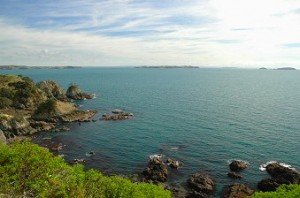The Hauraki Gulf is suffering from extensive environmental degradation due to a variety of factors, according to a report released this week.
 The report was produced by The Hauraki Gulf Forum – a joint committee of the Auckland and Waikato councils, government departments and tangata whenua- which reports every three years on the state of the Gulf environment, the degree of integrated management, and the responses of agencies to priority issues.
The report was produced by The Hauraki Gulf Forum – a joint committee of the Auckland and Waikato councils, government departments and tangata whenua- which reports every three years on the state of the Gulf environment, the degree of integrated management, and the responses of agencies to priority issues.
Their latest report, released on Tuesday, states that “that transformation is continuing in the sea and around the coast, with most environmental indicators either showing negative trends or remaining at levels which are indicative of poor environmental condition.”
You read the full report here (key findings are summarised further below).
The report has attracted some media attention, and spurred demands that greater measures be taken to protect the Gulf.
Media coverage:
New Zealand Herald: Hauraki Gulf: toxic paradise?
Radio New Zealand: Call for more protection of Hauraki Gulf
NewsTalk ZB: Call for review into Hauraki Gulf legislation
Radio New Zealand: Agencies looking after Hauraki Gulf ‘need to step up’
Radio New Zealand: Differences over protection measures for Hauraki Gulf
Key Findings (from media release):
- Toxic metals and organic contaminants are causing localised effects in Auckland estuaries and a number of metal contaminants also exceed sediment guidelines in the southern Firth of Thames.
- The Waihou and Piako rivers dominate nutrient loads to the Gulf with 70 percent originating from diffuse agricultural sources. The 1 percent per annum increase in nitrogen in rivers is consistent with increasing dairy cow numbers and uses of fertiliser and supplementary feeds.
- Muddy sediment rates are above natural levels and related changes in marine communities have been detected in several north Auckland estuaries.
- Mangrove expansion and other habitat changes are implicated in the decline of about half of the most common wading birds of the southern Firth of Thames.
- Endangered Bryde’s whales may be in decline due to vessel strike and entanglement in mussel farm spat lines.
- A large amount of plastic litter continues to enter the coastal environment, with long term persistence in the environment and effects on wildlife and aesthetics.
The report also notes encouraging signs; improving water clarity from better regulation and management of sediment run-off, declining trends in nutrients in Auckland Rivers and a rebuild of kahawai stocks.